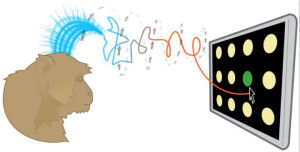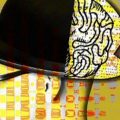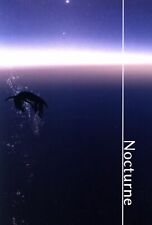
Scientists may have finally discovered why the neurons in the human brain seem to fire in utterly random ways. In the latest issue ofNature Neuroscience, University of Rochester researchers show how the brain’s cortex uses seemingly chaotic – or “noisy” – signals to represent the ambiguities of the real world; and that this noise dramatically enhances the brain’s processing power.
The new work connects two of the brain’s biggest mysteries; why it’s so “noisy”, and how it can perform such complex calculations. As counter-intuitive as it sounds, the noise appears to be integral to making those calculations possible. “You’d think this is crazy because engineers are always fighting to reduce the noise in their circuits, and yet here’s the best computing machine in the universe – and it looks utterly random,” said Rochester brain boffin, Alex Pouget.
“[The brain is] excellent at taking various bits of probability information, weighing their relative worth, and coming to a good conclusion quickly,” Pouget continued. “But we’ve always been at a loss to explain how our brains are able to conduct such complex Bayesian computations so easily.”
Two years ago, Pouget began questioning the function of the “noise” inherent in neuron function and began to realize that what looked like noise, might actually be the brain’s way of running at optimal performance. Bayesian computing can be done most efficiently when data is formatted in what’s called a “Poisson distribution,” and the neural noise, Pouget noticed, looked suspiciously like this optimal distribution.
Pouget and his team then investigated whether neuronal noise fitted this Poisson distribution, and found that it fitted extremely well. “The cortex appears wired at its foundation to run Bayesian computations as efficiently as can be possible,” he said. “The uncertainty of the real world is represented by this noise, and the noise itself is in a format that reduces the resources needed to compute it,” he added.
“Variability” may be a better word then “noise” to describe such neuron responses, according to Pouget. The team are now expanding their findings across the entire cortex, because every part of our highly developed cortex displays a similar underlying Bayes-optimal structure.
“If the structure is the same, that means there must be something fundamentally similar among vision, movement, reasoning, loving – anything that takes place in the human cortex,” says Pouget. “The way you learn language must be essentially the same as the way a doctor reasons out a diagnosis, and right now our lab is pushing hard to find out exactly how that noise makes all these different aspects of being human possible.”
Related Articles
Neurons Mix Digital And Analog Functionality












Comments are closed.